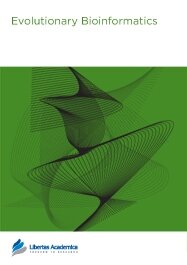

Publication Date: 13 Aug 2013
Type: Original Research
Journal: Evolutionary Bioinformatics
Citation: Evolutionary Bioinformatics 2013:9 317-325
doi: 10.4137/EBO.S12483

Phylogenetic analysis based on multi-loci data sets is performed by means of supermatrix (SM) or supertree (ST) approaches. Recently, methods that rely on species tree (SppT) inference by the multi-species coalescence have also been implemented to tackle this problem. Generally, the relative performance of these three major strategies has been calculated using simulation of biological sequences. However, sequence simulation may not entirely replicate the complexity of the evolutionary process. Thus, issues regarding the usefulness of in silico sequences in studying the performance of phylogenetic methods have been raised. Here, we used both classical simulation and empirical data to investigate the relative performance of ST, SM, and the SppT methods. SM analyses performed better than the ST and SppTs in simulations, but not in empirical analyses where some ST methods significantly outperformed the others. Additionally, SM was the only method that was robust under evolutionary model violations in simulations. These results show that conventional biological sequence simulation cannot adequately resolve which method is most efficient to recover the SppT. In such simulations, the SM approach recovers the established phylogeny in most instances, whereas the performance of the ST and SppT methods is downgraded in simpler cases. When compared, the analyses based on empirical and simulated sequences yielded largely inconsistent results, with the latter showing a bias towards a seemingly superiority of SM approaches.
PDF (1.67 MB PDF FORMAT)
RIS citation (ENDNOTE, REFERENCE MANAGER, PROCITE, REFWORKS)
BibTex citation (BIBDESK, LATEX)
XML
PMC HTML

This is the first time for me to submit a manuscript to Evolutionary Bioinformatics. It was really an impressive experience throughout the entire process. Every step of the process is discernible, punctual and accompanied by a professional and immediate email. Moreover, the peer reviewers provided fair and insightful comments, which significantly improved the manuscript. In addition, open access made sharing the article as easy as sharing a link with no subscriptions required and ...
Facebook Google+ Twitter
Pinterest Tumblr YouTube